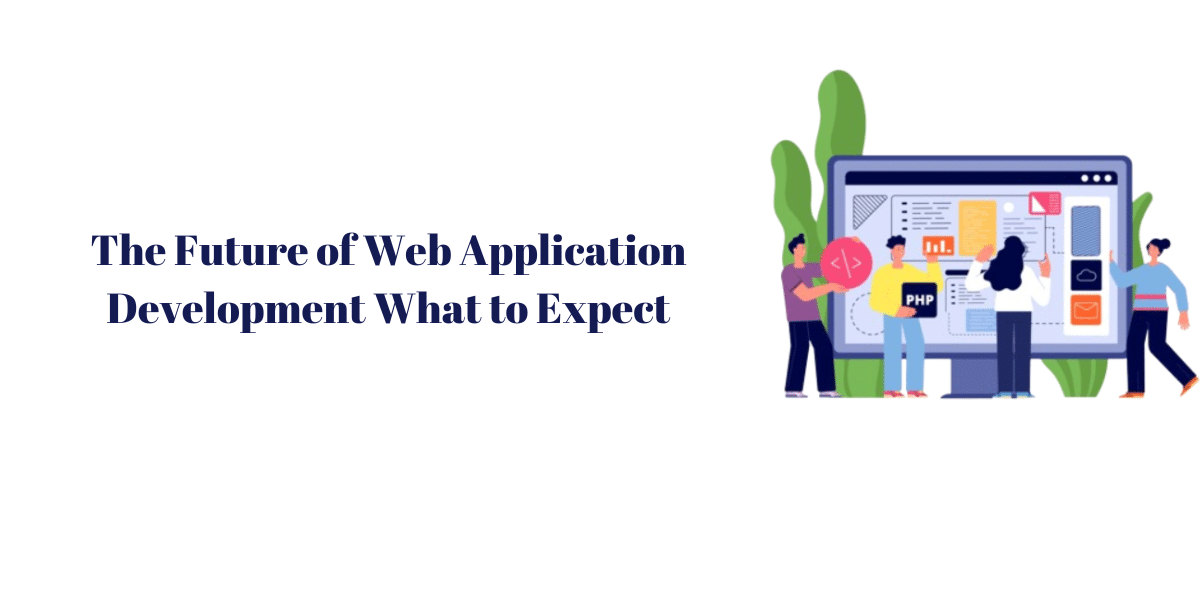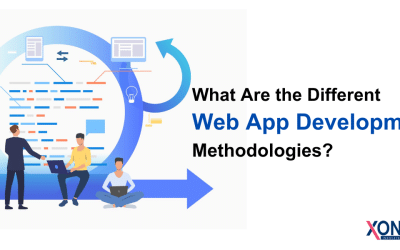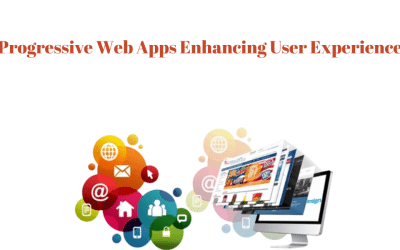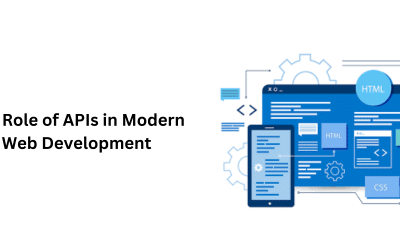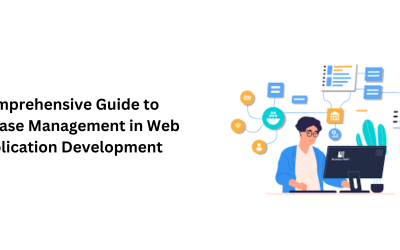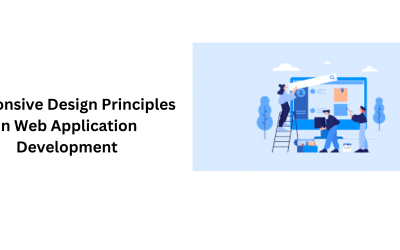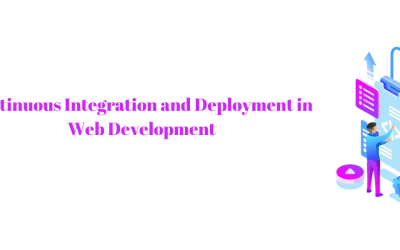In the constantly changing landscape of technology, the future of web application development offers many possibilities for transformation. As the digital world becomes more interconnected and users’ expectations continue to rise, the direction of web development is defined by the emergence of new technologies and their adaptation.
This examination focuses on major trends and new technologies shaping the future of web-based application development and provides insight into what we can expect in the next few years. From incorporating cutting-edge technologies such as Artificial Intelligence or WebAssembly to developing design guidelines and security concerns, This study aims to show the exciting road businesses, developers, and users are about to take.
Prepare yourself for a trip to the frontier of technology, where the combination of innovation and functionality is quickly changing the fundamentals of web app development.
Rise of Progressive Web Apps (PWAs)
The development of Progressive Web Apps (PWAs) is a paradigm change in web-based application development, giving users a seamless, enjoyable experience that blurs the lines between native and web applications. PWAs utilize the latest web technology to provide a speedy, efficient, reliable, and enjoyable experience regardless of users’ device or network settings. The key features include offline capabilities, responsive design, and the capability to be downloaded directly onto users’ devices without the need for app stores.
Utilizing the power of service workers and caching PWAs allows users to access content regardless of whether they are not connected or have the slowest internet connection. This increases the user experience and solves one of the significant issues of web-based applications. The PWAs have been designed to work across various devices, offering users a user-friendly and consistent interface regardless of whether they use tablets, desktops, or mobile devices. Additionally, PWAs remove the hassle of the traditional installation of apps, allowing users to integrate the app effortlessly into their home screen.
The growth of PWAs is changing the way developers approach web-based applications, focusing on speed as well as accessibility and user-centric design. With the majority of companies embracing PWAs and widespread support from industry for this model, the future of web-based applications is increasingly moving toward these flexible and user-friendly experiences. As the community of developers continues to adapt and develop the PWA model the users can expect an improved and seamless digital experience across a wide range of devices that are web-connected.
Cross-Platform Development Trends
Cross-platform app development has emerged as a top trend, due to the increasing need for cross-platform software applications that run seamlessly across operating platforms and devices. Frameworks such as React Native, Flutter and Xamarin have grown increasingly popular for creating applications which run across iOS as well as Android simultaneously using one codebase – this method not only speeds development but reduces both time to market costs as well as maintenance expenses.
Progressive Web Apps (PWAs) have created an intriguing transition between web-based applications such as Progressive Web Apps (PWAs) and native ones, blurring their edges into cross-platform solutions which combine their best qualities. Frameworks like Electron enable developers to build desktop-based programs utilizing web technologies which expand capabilities across mobile phones platforms – and this development of cross-platform apps continues to advance meeting challenges such as native-like performance, seamless device integration and improving user experiences.
With developers increasingly focused on increasing efficiency and reach with their apps, cross-platform development trends could play a pivotal role. Adopting standard technologies and tools may create an environment in which applications seamlessly cross platforms to provide users with an seamless and immersive experience across devices as well as operating systems. This represents an essential shift that emphasizes flexibility as well as accessibility within this constantly expanding realm of cross-platform development.
Embracing WebAssembly for Performance Boost
The adoption of WebAssembly (Wasm) represents a significant leap forward in the development of web-based applications and provides a significant performance boost to execute high-performance low-level code directly within web browsers. This format of binary instruction serves as an assembly target for a variety of programming languages, freeing them from the limitations of JavaScript and providing near-native speed of execution. Developers now have the ability to use languages such as C, C++ as well as Rust to develop complex functions that were previously difficult to create using only web-based software.
By harnessing the power in native machine-code WebAssembly lets developers create web applications that match the performance and speed from native desktop programs. This is especially important for tasks that require a lot of computation like games, simulations, and multimedia processing. In these cases, the increased performance of WebAssembly can dramatically improve your user’s experience. Additionally, WebAssembly fosters a more multi-faceted and inclusive development environment which allows developers to choose the appropriate language to meet their needs, while seamlessly integrating their applications with the web.
Impact of Artificial Intelligence on Web Apps
Impact of Artificial Intelligence (AI) on web-based applications is significantly changing the landscape of digital by infusing web applications with greater technology, intelligence and adaptive capabilities. AI integration can bring personalized customer experiences at the forefront of technology, using algorithms that use machine learning to analyse users’ preferences, behavior as well as interactions. This allows web applications to adapt content such as recommendations, interfaces, and even the content to increase the user’s experience and satisfaction. Chatbots as well as virtual assistants powered by AI are becoming essential elements of web-based applications that provide immediate interaction and assistance to users.
By using natural language processing, these AI-powered elements are able to comprehend questions from users, provide details, and perform tasks in the web application providing a more user-friendly as well as user-friendly. Furthermore, AI contributes to advanced data analytics, which allows web applications to extract valuable insights from massive data sets, improve decision-making processes and forecast the behavior of users. Web applications’ security can also benefit from AI by using machine learning algorithms capable of detecting and reducing possible threats in real time improving overall security.
As the relationship between AI and web application development solutions expands with the promise of more efficient, adaptable and user-centric digital experience. The revolutionary impact of AI goes beyond the individual web apps, and is affecting the entire web development. It will usher into an age of smarter, more responsive, more receptive, and creative online experiences that are able to cater to the changing requirements and demands of the users within the ever-changing digital world.
The Role of Augmented Reality in Web Development
The application of Augmented Reality (AR) in web development represents an evolution in technology, offering an immersive, interactive experience that connects the physical and digital worlds. AR improves web-based application by overlaying virtual content on the real-world surroundings of the user providing compelling and contextually relevant experiences. For web design, AR is leveraged to improve e-commerce platforms and allow customers to see the products within their own environment prior to making a purchase.
Educational websites make use of AR to bring educational material to life by providing dynamic and interactive content. AR-powered navigation and location-based services improve the experience of users on travel and mapping sites with real-time data overlayed on the surrounding physical environment. Additionally, AR is changing storytelling on platforms for the web by enabling users to engage with narratives in three-dimensional environments. With browsers becoming increasingly compatible with AR technologies web developers are experimenting with creative ways to integrate AR features seamlessly making use of frameworks like AR.js as well as WebXR.
Responsive and Adaptive Design Innovations
Innovative and responsive design concepts are now the cornerstones of the modern web development process, which addresses the variety of screens and devices using online content. Responsive design, defined through flexible grids, media queries and makes sure that web applications are able to automatically adjust to different screen dimensions, ensuring a seamless user experience across different devices. The development of adaptive design resulted in the integration of cutting-edge methods like fluid grids and dynamic images, ensuring an aesthetically pleasing and seamless experience no matter what device you are using. In contrast, adaptive design allows customization to the next level by customizing the user experience to the particular features of the device, including resolution, size, and capabilities.
This means developing distinct layouts and features to suit different device types which improves performance and user engagement. Recent developments in adaptive and responsive design are the introduction of CSS Grid and Flexbox which allow developers to design complex designs that adjust to various screen sizes effortlessly. Additionally, the idea of mobile-first design focuses on starting designing with the mobile device with a focus on mobile devices, making sure that applications are designed to provide an efficient and smooth experience for smaller screens prior to expanding to larger screens.
While web design continues to take the mobile-centric model with adaptive and responsive designs are essential to not just accommodating the diverse range of devices, but also defining the future of visually pleasing, user-centric and seamless websites across a constantly expanding range of platforms.
Increasing Importance of Cybersecurity
The growing importance of security in web development is evidence of the growing security threats and weaknesses that exist in the cyberspace. As web-based apps are becoming more sophisticated and integral to everyday life and activities, the risks related to cyber security increase. The increasing importance of personal information gathering, online transactions and interconnected systems increase the potential of web applications as potential targets for malicious actions.
Web developers are now putting an increased emphasis on the implementation of secure measures that are robust, like encryption protocols and secure coding practices and regularly scheduled security audits. With the use of HTTPS being a norm and data transmission becoming more secure, reducing the threat of eavesdropping and data security breaches. The prevalence of cyber-attacks like SQL injections as well as cross-site scripting, requires continuous monitoring of web development to guard against threats like these. Furthermore, the rising adoption of cloud technology highlights the importance of secure cloud solutions, which include measures such as multi-factor authentication as well as security-based access controls.
As the regulations regarding data privacy and security become stricter, adherence to frameworks like GDPR and CCPA is becoming a requirement to web designers, and requires strong security solutions and transparent practices in handling data. The development of cybersecurity within web development isn’t only a reaction to current threats, but rather a proactive method of protecting the privacy of users’ data, ensuring trust and reliability of web applications despite an ever-changing threat landscape. In this age of connectivity to the internet, security isn’t just an attribute, but it is a key element of safe, reliable, and dependable web-based applications.
Integration of Voice and Chat Interfaces
The incorporation of chat and voice user interfaces in web design is an evolutionary shift towards more natural as well as interactive user experience. This trend is being driven by the proliferation of smart speakers, virtual assistants and messaging platforms that have become part of the daily lives of users. Using voice interfaces, based on technologies such as machine learning, natural machine learning (NLP) or machine learning lets users interact with websites using spoken commands, thereby making navigation and retrieving information easier and more fluid.
Chat interfaces, which are often powered by chatbots or other agents, offer users immediate responses and help in enhancing customer service and making transactions easier. The integration of chat and voice interfaces isn’t only about increasing accessibility, but it is also about creating a personalized and interactive model of interaction. Developers use Application Programming Interfaces (APIs) from platforms such as Amazon Alexa, Google Assistant and Microsoft Bot Framework to integrate these interfaces efficiently. This trend is evident in the e-commerce industry where voice-enabled shopping and chat-based customer support are now regular features.
As technology improves and advances, the combination of chat and voice interfaces is likely to be more advanced which will enable more immersive interactions while improving the capabilities of web-based apps. The main challenge is making sure that there is a seamless and cohesive user experience that combines visual elements and chat and voice to provide a seamless and user-centered digital experience that goes beyond conventional input methods and provides users with an easier and natural interaction.
Web Components and Modular Development
Web Components and modularization represent the fundamental shift in paradigms of web development that encourages the reusability, maintenance ability and the encapsulation of code components. Web Components are a set of APIs for web platforms that allow developers to design unique, modular elements that can be encapsulated in their own styles and behaviour. This modular approach permits creating self-contained and interoperable elements that can be seamlessly integrated into different web-based applications, increasing efficiency of code and decreasing the amount of redundant code.
Implementing a modular approach to development extends further than Web Components, encompassing the broad process of breaking down applications into distinct, separate modules. Modularization not only speeds up the process of web development but helps facilitate collaboration between teams of developers, permitting them to work on certain components on their own. Tools such as JavaScript’s ES6 modules as well as bundlers such as Webpack aid in the modularization trend, which allows developers to arrange their codes in a more precise and manageable way. The benefits of modularization include code reuse, simpler testing and debugging, as well as increased scalability when applications increase in complexity.
As web applications continue to develop and require more flexibility, the usage of web components and other modular development techniques is rapidly becoming the norm which allows developers to develop more effective, reliable and scalable web applications that match the evolving nature of the ever-changing digital landscape.
Serverless Architectures in Web Development
Serverless architectures for web development are a radical alternative to traditional server-based systems creating a model where developers can concentrate on writing code, without the requirement for managing servers. Serverless design, which is also referred to in the field of Function as a Service (FaaS) , specific functions or code units are created as a result of specific triggers or events, and scale according to the demand. This eliminates the expense of maintaining and provisioning servers and allows developers to focus on developing and deploying functions that perform specific tasks.
Cloud-based providers, such as AWS Lambda Azure Functions, and Google Cloud Functions, facilitate serverless development through an affordable pricing structure that allows for pay-as-you-go and automatic scaling in accordance with the usage. Serverless architectures are particularly beneficial for applications that run on events, microservices and other scenarios with unpredictable workloads. Serverless architectures promote agility as well as scalability and cost-efficiency since developers only pay for the compute resources utilized during function execution.
However, issues such as the management of state, lengthy time to initialize, and a limited time for execution per function must be taken into attention. As serverless gains popularity, it transforms the world of web development by offering the flexibility and capacity that meets the needs of modern-day applications, and promoting efficiency and innovation in the ever-changing world that is cloud computing as well as web design.
Emphasis on Accessibility and Inclusive Design
The importance of the accessibility of web design and an inclusive approach to it demonstrates the importance of ensuring that digital experiences can be used for people with disabilities and abilities of all kinds. This shift in paradigm goes beyond the mere adherence to accessibility guidelines; it’s an acknowledgment of the various requirements of users and a commitment to designing digital environments that are comfortable and practical for all users. Inclusion-based design is about considering a variety of users at the start of the design process, considering the differences in capabilities, disability, age, and limitations imposed by the environment.
Web developers are more and more adopting accessible design principles and incorporating features such as semantic HTML as well as explicit alt-text for photos and keyboard navigation to improve the accessibility of web-based applications that are accessible to people who have motor, sensory or cognitive limitations. Incorporating assistive technology and making sure that they are compatible with screen reader, speech recognition and other assistive technology helps create an inclusive digital environment. The rising awareness of the significance of accessibility reflects the requirements of law and standards like that of Web Content Accessibility Guidelines (WCAG) which reinforces the idea that digital accessibility isn’t only a legal requirement, but also a moral obligation and a good business procedure.
While the world of digital develops the importance of the accessibility of design and an inclusive approach acts as a catalyst for new ideas that pushes web designers to design solutions that focus on accessibility for all users regardless of their individual abilities which creates an inclusive and user-friendly online experience for a worldwide user.
Blockchain and Web Application Security
Blockchain is becoming a breakthrough technology in the field of web application security. It offers an open and tamperproof system that increases security and integrity of data. In the world of web development, incorporating blockchain into applications can provide an effective layer of security by creating a clear and unalterable record of data transactions or transactions.
Blockchain’s decentralization ensures that no one point of failure is present which reduces the chance from single point attacks. Intelligent contracts that self-execute agreements that have the terms written directly into code, allow the safe and efficient execution of rules that are predefined which reduces the risk of fraudulent or criminal activities. Blockchain’s cryptographic concepts contribute to the security of authorization and authentication mechanisms that improve the management of user identities and access control.
Additionally, using identities that are decentralized using blockchain technology reduces dependence on centralized databases, which reduces the chance of massive data security breaches. As blockchain technology develops its integration with web-based applications offers the potential to solve the most critical security concerns including data manipulation, unauthorised access, as well as privacy concerns. But, the challenges of scalability, interoperability, or user adoption require attention to. Blockchain and web application development security is an innovative synergy that gives developers new tools for creating highly secure digital ecosystems which place a high value on trust, transparency and resilience to the ever-changing cyber-attacks.
Microservices Architecture for Scalability
Microservices have emerged as a revolutionary approach to web development. It revolutionizes the scalability of monolithic applications into smaller modular, independent services. Each microservice functions as an autonomous entity that is responsible for a particular business function, which allows for flexibility, agility and scaling. This architectural model facilitates horizontal scaling, which means that microservices can be replicated separately based upon the demand. Microservices can be scaled through the deployment of multiple instances of the microservices that are experiencing higher load, which allows for the efficient utilization of resources and the ability to respond. Microservices are modular, which lets developers scale particular components without impacting the whole application, which results in an effective and more targeted resource allocation.
Microservices also allow the use of a variety of technology for various services, focusing on particular functions and performance requirements. This kind of granular scalability is compatible with the modern cloud computing environment; microservices are able to dynamically scale up and down according to changing workloads. Although microservices have unquestionable advantages with regard to scalability, they present challenges like the interplay of services, consistency in data and complexity of the system.
A successful implementation of a microservices to scale requires a well-thought out design, strong communication methods as well as a thorough knowledge of the app’s requirements. As companies increasingly adopt microservices, the shift in architecture is transforming the way that web applications are built to provide a flexible and adaptable solution to keep up with the demands of today’s ever-changing and evolving digital world.
Real-time WebSockets Features
WebSockets are a game changer in web development providing real-time features that change user interactions and content delivery. In contrast to the traditional HTTP protocols that use an order-response pattern, WebSockets establish a persistent two-way communication connection between server and client. This provides instantaneous, continuous data exchange, removing the requirement for multiple requests.
Servers can deliver updates to connected customers in real-time. WebSockets are a great choice for situations that require low-latency communications which makes them perfect for applications that require real-time functions like chat applications and online gaming platforms, collaborative editing platforms, financial dashboards, as well as streams that live. The effectiveness of WebSockets is the fact that they can keep an open connection. This allows instant data transfer without the hassle of creating connections.
Additionally, WebSockets operate over a one, long-lasting connection, thus reducing the demands for server resources and traffic through networks. The use of WebSockets is supported by a variety of frameworks and libraries, including Socket.IO, SignalR, and WebSocket API, which ease managing and integrating real-time functions in web-based applications. While WebSockets enhance user experience by providing prompt updates and increasing interactivity, developers need to consider issues such as security, scalability, as well as error management to ensure the quality and stability of the real-time capabilities in the constantly evolving web development landscape.
API-First Development Approaches
API-First Development techniques have emerged as a paradigm-shifting approach to web development, focusing on the development and design of Application Programming Interfaces (APIs) as an essential element of the development of software. With this method, APIs are considered first-class citizens and serve as the basis for the development of both backend and frontend. Prioritizing API design prior to implementing the frontend or user interface functions developers can develop a unified and consistent interface for data communications and interaction.
API-First Development facilitates collaboration between various teams that allows frontend and backend developers as well as third-party developers to work together using well-defined API specifications. Tools such as OpenAPI and Swagger assist in development and testing of APIs while providing continuity and reliability throughout each stage of the process. The API-First model promotes the use of a modular and flexible architecture which allows the application of APIs to a variety of platforms and applications. Furthermore, it is in line with microservices principles which allows the development of interoperable, independent services.
An API-First approach does not just speed up development, but also increases flexibility since changes to the user interface or backend implementations are able to be accommodated without disrupting API contracts. API contract. This approach is especially beneficial in the context of current practices in software development, such as Continuous Integration and DevOps since it promotes agile development, facilitates rapid prototyping, and makes sure that API designs can be adapted to changing business requirements in the ever-changing world of web development.
The Influence of 5G on Web App Performance
The effect of 5G on web application performance is set to revolutionize the experience of digital users, using incredible speed, reduced latency, and greater bandwidth to bring web apps into a new world of interactivity and responsiveness. With 5G, web apps are able to benefit from dramatically speedier upload and download speeds, while reducing the time required to load media, content and other complicated features.
The lower latency offered by 5G allows for faster responses between user interactions with server activities, which creates an instantaneous and seamless user experience. Furthermore, the increased bandwidth that 5G provides allows the provision of higher-quality content, like quality media, virtual reality and virtual reality which are transforming the possibilities of web-based applications. Developers can make use of the potential of 5G in order to create more advanced and dynamic apps that push the limits of what was possible previously. As 5G networks expand in popularity web-based applications are set to provide incredible performance, opening the way to new innovations in areas such as real-time collaboration as well as immersive user interfaces and applications that require a lot of data.
But, developers should think about optimizing their web applications to make the most of 5G’s possibilities and ensure that users experience a smooth experience across different network conditions. The arrival of 5G does not just boost web application performance, but creates the foundation for an entirely new set of possibilities that will change the way users interact with digital services and content in the constantly evolving world in web-based development.
Low-Code and No-Code Development Platforms
Platforms for development with no code and low-code are proving to be significant catalysts in changing the world of web development by providing easy and effective solutions for creating applications that require less reliance on traditional programming techniques. Low-code platforms offer developers built-in components and interfaces, which allow the creation of complex apps by connecting and configuring these components.
On the other hand, low-code platforms take that abstraction one step further by empowering users with no or little programming experience to create useful applications with intuitive drag-and drop interfaces and the ability to configure tools. These platforms can be used to democratize the development process by allowing non-technical users to participate in the development of applications which encourages collaboration between business together with IT professionals. The adoption of low-code or non-code platforms dramatically accelerates the development process, decreases the need to hire skilled engineers, and enables organisations to quickly respond to the changing needs of business. While these platforms are excellent at creating simple applications, they can face challenges when dealing with complicated high-end, highly customized, or mission-critical situations.
Finding an equilibrium between speed and customisation is a major factor for companies that use low-code and no-code applications. As these platforms mature and gain more acceptance they are an important shift in the way applications are designed, created and maintained, which is democratizing the development process and permitting more people to participate actively in the development of digital solutions within the ever-changing world in web design.
Data Privacy and Compliance in Web Apps
Privacy and data security are now the most important considerations in the creation of web-based applications development, indicating a growing awareness of rights of users as well as the legal framework that governs the handling of personal data. As online interactions grow more complex the web developer is under greater pressure to ensure that robust security safeguards can be implemented to safeguard personal data of users.
Conformity with laws such as that of General Data Protection Regulation (GDPR) and the California Consumer Privacy Act (CCPA) is not just an obligation under law, but also an ethical duty. Web applications should incorporate privacy-by-design principles and implement measures such as data encryption and secure authentication for users and techniques for anonymizing to protect sensitive data. In addition, user-friendly and transparent Privacy policies and consent processes and plans for responding to data breaches are vital to ensuring compliance and maintaining trust among users. The privacy landscape is ever changing, with evolving standards and increased expectations from users which require continuous monitoring and constant changes to web development methods.
Finding a balance between cutting-edge technology and robust data protection mechanisms is a major problem, which requires a comprehensive method that is able to consider not only the legal aspects but also ethical considerations when it comes to the ethical handling of personal data. Web developers must be proactive in keeping up-to-date with evolving privacy standards, implementing techniques that improve privacy, and creating an environment of data stewardship in order to manage the complex intersection of user experience, innovation as well as regulatory and compliance requirements in the constantly changing and ever-changing world of web-based apps.
Containerization and Docker in Web Development
Containerization, as demonstrated by technology such as Docker, is revolutionizing the web development landscape by providing a light and extensible solution to deploy and manage applications across a variety of environments. Docker containers are able to encapsulate the applications together with their associated dependencies in a standard unit, which ensures consistency while eliminating the well-known “it works on my machine” issue.
This method allows seamless deployment across various environments, including testing, development or production systems, which promotes reliability and uniformity throughout the entire software development cycle. The tools for orchestrating containers like Kubernetes help to improve capacity and efficiency that allow developers to build and manage containers-based applications on a massive scale. The modular and portability of containers are in line with microservices’ architecture, allowing developers to break up monolithic software into smaller, independent deployable parts. Containerization increases efficiency, allowing faster development times with a simplified scale, as well as enhanced utilization of resources. Additionally, containers aid in a productive use of the resources because they are sharing the kernel of the operating system host while preserving user-specific areas for applications.
This reduces not only the cost of virtualization, but also creates an efficient and streamlined deployment method. While it is true that containerization can bring benefits, developers need to be aware of security issues, complex orchestration, as well as appropriate configuration management in order to benefit from the benefits from Docker in the ever-changing and ever-changing world in web design. As containerization gains importance and impact, its influence on web development goes beyond the scope of specific applications, impacting the entire lifecycle of software development and fostering the ability to scale, agility and scalability across a variety of environments.
Web Development Trends in E-commerce
The trends of web development in e-commerce are constantly evolving to meet the ever-changing requirements of the online market, transforming the way companies interact with their customers on the internet. Progressive Web Applications (PWAs) are gaining popularity, giving eCommerce platforms with faster loading times, enhanced performance and a user experience that is similar to apps in browsers for the web. The headless e-commerce model has emerged that separates the frontend from the backend to allow for developers to design custom and user-friendly interfaces.
Integration of Voice Commerce is increasing due to the growing use of devices with voice activation, which allows consumers to make purchases and interact with online shopping platforms via voice commands. AI-driven personalization improves the user experience by analyzing the behavior of customers and preferences, adjusting recommendations and enhancing content based on the individual interaction. Augmented Virtual Reality (AR) as well as Virtual Reality (VR) technologies are being used to provide immersive shopping experiences, which allow customers to see the products in real-time before making a purchase.
Security measures that are more robust, such as biometric and two-factor authentication, are now common practices to ensure security of sensitive customer information. In addition, the implementation of microservices that are serverless enables flexibility and scalability in managing the peak load during sales events. Blockchain technology improves the transparency of supply chains and guarantees the authenticity of the product. As the development of e-commerce continues to advance and evolve, the intersection of these two trends creates an increasingly dynamic personalized, secure, and secure online shopping experience, and defines the direction of the online retail industry as it adapts to the changing demands and preferences of consumers who are digital.
Progressive Enhancement Strategies
Progressive enhancement strategies for web development reflect a philosophy that emphasizes accessibility, performance and the ability to adapt to different user experiences. The strategy involves providing an initial, functional version of a site for all users, regardless of their browser or device capabilities and gradually enhancing the experience for users who have more advanced technology.
This method ensures that the basic functionality and content are available to a large population, including those with older browsers or devices with limited capabilities. When visitors access the site using modern browsers or devices, more features like styles, interfaces, and other features are added gradually and create a more advanced and more enjoyable experience. Progressive enhancement is in line with the fundamentals of web standards that emphasize semantic HTML, the separation of issues through CSS for style, and non-obtrusive JavaScript to enhance capabilities. It is compatible with different devices, ranging from text-based browsers to the most recent smartphones, which improves accessibility and resiliency.
This approach also enables an environmentally sustainable approach to web development by reducing the necessity for continual revisions or redesigns, and allowing websites to seamlessly adapt to changing technologies. Through embracing the concept of the concept of progressive enhancement, web developers can not just create more inclusive and robust web experiences, but help create an environment that prioritizes accessibility, usability, usability, as well as long-term sustainability in the constantly evolving web development landscape.
Edge Computing and Its Impact on Web Apps
Edge computing is emerging as a paradigm-shifting concept in web development. It is changing the way web applications are built and experienced by leveraging distributed computing resources at their edge. In contrast to traditional cloud computing, which centralizes processing in distant data centers, edge computing brings computing power closer to users by reducing latency while increasing the speed of response in real-time.
This change has a significant impact on web applications particularly in situations that require low-latency interaction. By placing web applications on servers that are located close to users, speed of delivery of content is dramatically increased and results in quicker page loading as well as faster response times and overall better user experience. Edge computing is especially beneficial in applications that need real-time data processing for example, IoT devices such as augmented reality, IoT devices, and streams that live. Additionally, it decreases the burden on central data centers, by distributing the processing load and maximizing the utilization of resources.
As edge computing gains traction as developers look for new ways to make use of its capabilities by implementing applications that are location-aware and optimizing content delivery to particular areas. However, security issues and standardization as well as orchestration need to be addressed in order to realize the full power of Edge Computing in Web Development. The inclusion of edge computing into web applications represents an evolution in the way we work, creating an improved responsive, scalable and resilient digital experience for web users in the ever-changing web.
The Growing Role of DevOps in Web Development
The increasing importance in DevOps within web design is an important shift to a more efficient, collaborative and automated method of software delivery. DevOps is a blend of operations and development, and seeks to bridge the gap between the development and IT operations teams, encouraging an environment of continuous integration, collaboration in addition to continuous release.
When it comes to Web development solutions, DevOps practices streamline the whole development process starting with code creation, through installation and ongoing maintenance. Automated tools, such as Jenkins as well as Travis CI enable continuous integration, allowing developers to combine changes to code more frequently and identify mistakes earlier in the development process. Continuous delivery guarantees that apps are always available for deployment which allows rapid and secure releases. Infrastructure as Code (IaC) principles, which are often implemented using tools such as Terraform, offer a standard and version-controlled method for managing infrastructure, which reduces manual errors and improves reliability.
Containerization, as illustrated by Docker, helps to ensure the sameness across environments from production to development. DevOps additionally embraces feedback and monitoring mechanisms which allow teams to respond promptly to problems, enhance the performance of applications, and improve the use of resources. This approach of collaborative and iterative development will not only speed up the development process but also improves the resiliency and scalability for web applications. As the significance of DevOps expands and its principles are incorporated to the foundation of modern web development, allowing teams to provide quality, reliable, and efficient digital experiences in the ever-changing and rapid-paced world of the web of today.
Interactive User Experiences through WebVR
Immersive User Experiences utilizing WebVR have changed how users interact with digital content, adding virtual reality to your web browser thereby extending the traditional, two-dimensional experience. WebVR is an API that lets developers build VR experiences accessible to the standard web browsers, and allows users to interact with immersive content without having to purchase dedicated VR devices or apps.
By leveraging technologies such as WebGL, WebVR empowers developers to create 3D-based virtual environments and interactive models or virtual trips that visitors can experience on a range of devices, ranging from smartphones to desktops. This method makes it easier for everyone to access VR experiences and makes them more accessible and accessible to all. Frameworks such as A-Frame and Three.js make it easier to create WebVR content by allowing developers to effortlessly incorporate virtual elements into websites. WebVR is especially effective in areas such as education gaming, gaming, and ecommerce in which it enhances customer interaction and provides memorable experiences.
As browsers continue to improve and support for WebVR grows more robust and opens the door to an era of Web development that focuses on interactivity and immersive experiences. While issues such as optimization for performance and compatibility with mobile devices remain, the potential of WebVR to transform user engagement and web-based storytelling is a compelling option for web developers who want to expand the boundaries of digital experience in the ever-changing world that is web-based development.
Server-Side Rendering vs. Client-Side Rendering
Server-Side rendering (SSR) as well as Client-Side rendering (CSR) are two different approaches in web development to present information to users. SSR is the process of rendering the site on the servers, and sending the fully formatted HTML in a fully formatted HTML file to the user. This allows users to view content quickly. This is beneficial to the search engine’s optimization (SEO) since search engines are able to easily scan the page. SSR usually results in quicker initial page loading and enhanced performance on devices that are not powered by a powerful processor.
However, CSR shifts the rendering process to the client side which downloads a basic HTML document, then retrieves and renders additional content by using JavaScript. This technique allows interactive and dynamic user interfaces. It is ideal for complex single-page applications (SPAs) which have regular updates as well as interactions happen without reloading the entire page. But, CSR could result in slow page loading and can affect user experience and could pose a challenge for SEO. The decision to choose SSR and CSR depends on factors such as specifications for the project, performance goals and the content’s nature.
Hybrid solutions, like using SSR to load the page initially and CSR for later interactions, are a viable option using the advantages of both rendering techniques. This is often the decision of balancing the client and server responsibilities as well as performance considerations. the user experience that is desired in the constantly changing landscape that is web design.
The Key Takeaway
In the end, the ever-changing web application development landscape is characterized by a variety of technologies and trends that influence the way users interact within the online world. From the transformational effect of DevOps in encouraging collaboration, to the engaging experiences offered via WebVR and the gains in efficiency that are derived from containerization, these advances highlight the changing nature of this field.
The focus on accessibility as well as security and data privacy are a sign of a growing commitment to ethical and user-centric practices. When it comes to taking on Progressive Enhancement strategies for inclusive design or harnessing the potential for Edge Computing for lower latency web developers must navigate in a world in which innovation, scalability and flexibility are essential.
As we plan for in the near future, the convergence of these developments propels web development into new frontiers in which collaboration, accessibility and the latest technologies come together to create new digital experiences that define our connected world.

